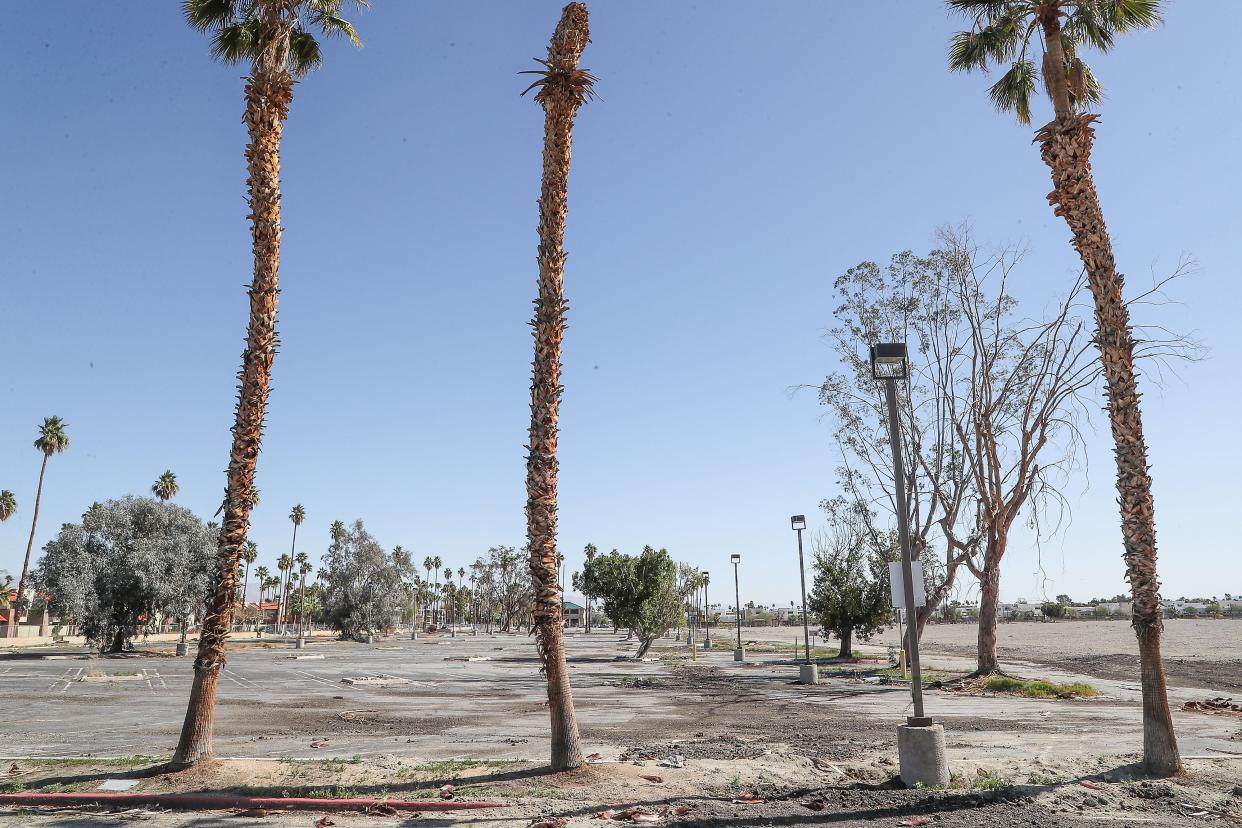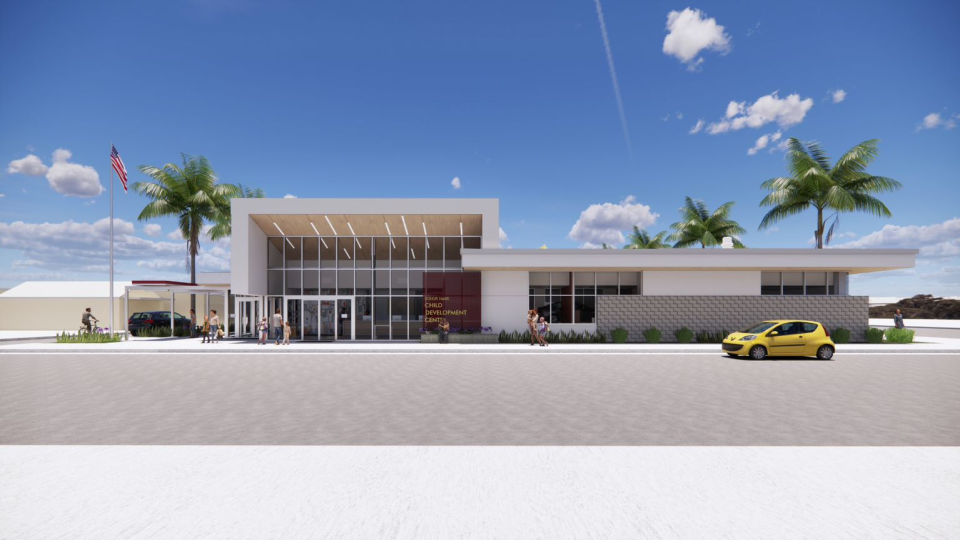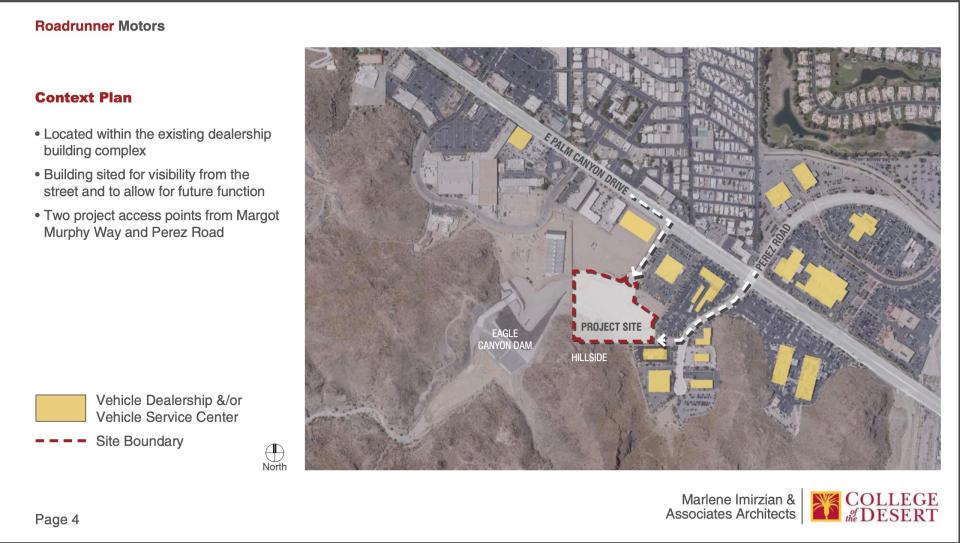College of the Desert makes changes but moves forward with 'Citizens Advisory Group'

College of the Desert will move forward with a modified version of its proposed “Citizens Advisory Group” to inform design elements of its planned Palm Springs campus.
The school’s Board of Trustees voted unanimously in favor of a motion to create the advisory group Friday, with changes to its composition and stated purpose.
College staff originally recommended the body have 7 to 10 members drawn from a specific list of different constituencies, such as students and business leaders. Now, it will have a total of 11 members. Each of the school’s five trustees will recommend two members based on any criteria they see fit, plus one alternate candidate.
College President/Superintendent Martha Garcia and Board Chair Ruben Perez will then make final selections from among these candidates, swapping in alternate candidates as necessary with the stated goal of creating a diverse mix of participants.
The final advisory group member will be a student chosen by the Associated Students of College of the Desert to ensure representation of that group.
That change, first suggested by Perez, followed concerns raised during public comments by speakers including Palm Springs Planning Commission Chair Kathy Weremiuk and Bruce Hoban, a spokesperson for the Promises Made-Promises Broken group that has been critical of COD leadership.
“That (advisory group) should really be chosen not by the college, but by the mayors in Palm Springs, in Desert Hot Springs, and Cathedral City,” Weremiuk said. “It should include our business people and our political leaders who understand what our needs are. Without that, you will get no buy-in from that (group) either. And we will still be here concerned about what you're doing.”
Perez pushed back on those concerns, and proposed that each board member choose two members of the group at their discretion to pass to himself and Garcia for final selection.
“I do want to say that I appreciate all the comments from the public as it relates to this group and while I can appreciate the interest in joining the Citizens Advisory Group, quite frankly, this is what the trustees got elected to do — to make these types of decisions,” Perez said. “Quite frankly, that's why you individuals in the community have a trustee.”
In response to Board Vice Chair Bonnie Stefan’s concerns that the new advisory group could exclude some stakeholders, the group elected to add an additional “alternate” candidate from each board member to allow adjustments to the final list selected by Perez and Garcia.
The board also added wording to describe the charge and role of the advisory group following concerns raised by Area 3 Trustee Fred Jandt that its purpose wasn’t fully clear in the existing resolution.
The added charge and role were read by college Vice-President Christina Tafoya as follows:
“The Advisory Group is a structured and collaborative method for College of the Desert to engage with external advisors within the Coachella Valley community and advisory members will serve as a sounding board for the Phase One schematic design for the Palm Springs development project …
“The advisory group is not a governance board, like the COD board of trustees or board of directors. Instead, their role is to provide current knowledge, critical thinking and analysis and increase the decision making process that occurs in the schematic design process.”
The group will advise on Phase I of the planned Palm Springs campus, which includes the development of a portion of the campus buildings, mainly near the intersection of Farrell Drive and Baristo Road, according to college spokesperson Nicholas Robles. It includes areas such as student commons, faculty offices, mock hotel rooms, kitchens and other facilities and is based on a 114,000 total square-foot campus design, rather than the 330,000 square-foot design previously discussed for the site.
The group will be consulted on design elements that focus on what the planned buildings and other spaces will look like, but not on fundamental details such as the size or location of a particular facility.
The college envisions making applications available via its website. The group is expected to meet roughly two times per month from September through December, according to the school. Meetings are planned to be held online.
Total cost of ownership
The board also discussed the total cost of ownership — the full estimated costs of purchasing (or constructing) and maintaining an asset over its usable lifetime — for three of its major ongoing projects: additions to its Indio campus, the Roadrunner Motors facility in Cathedral City, and Phase I of the Palm Springs campus.
It did not include a planned student services center in Coachella. Garcia said she "may have not" provided information on that project to the consultant conducting the cost of ownership study, George Walters of Cambridge West, but did not explain the reason for the omission. She said she would provide the board with information on the total costs of ownership for the project in the future.
The expenses include costs for activities such as cleaning and maintaining the facilities, but do not include staffing costs for faculty, according to Walters, who described the estimates as necessary for accreditation.
Walters estimated that 131,000 gross square feet in the Palm Springs campus’ Phase I will generate about $1.4 million in total costs annually beginning in the school’s 2026/2027 budget.

The Indio campus additions will include an expansion to the north of the existing campus that more than double the size of the college’s existing space, with 67,000 square feet of new facilities. It will include new classrooms, a dining area, study spaces, computer and science labs and expanded faculty offices, according to a January Board of Trustees report.
It will also include an 18,000-square-foot Child Development Center that will serve as a hands-on training facility for College of the Desert students working toward a range of majors under the school’s Child Development Education program. It will include a standard college classroom for lectures, as well as a playground, daycare and preschool facilities.
Together, the college estimated that the new Indio facilities will generate total costs of $816,000 annually beginning in the school’s 2023/2024 budget.
Roadrunner Motors, the college’s planned automotive education center in Cathedral City, is the smallest of the school’s ongoing expansion projects. The roughly 26,000 square-foot facility is expected to generate $260,000 in costs annually beginning in the 2026 budget — when the facility is expected to be completed — according to the board presentation.

In total, the three facilities would generate roughly $2.5 million in recurring annual expenses, according to Walters.
The facilities are being constructed using hundreds of millions of dollars in bond money approved by voters. Property owners in the Coachella Valley have been assessed taxes specifically to pay for those bonds, but the funds are not for ongoing operational expenses.
In comments following the presentation, the school’s president and members of the board framed the expenses as highlighting expansion costs beyond those understood by some members of the public.
“Remember this continues growing as far as staff as we're opening additional sites so it is important for you to realize that I need to make sure that we're being honest when it comes to the financial needs of the institution moving forward because, frankly, it worries me,” Garcia said.
“It reminds us that we, at times have to do with what's right and not what's popular,” said Area 2 Trustee Bea Gonzalez.
Public response and hospitality management program update
The president and board’s comments followed a round of scathing rebukes by members of the public during Friday’s meeting.
A host of speakers called in or spoke in person, mostly focusing on the board and Garcia's handling of the planned Palm Springs campus. They included Palm Springs business leaders such as Michael Braun, president of Palm Springs-based Grit Development, and Aftab Dada, chair of hotels group PS Resorts and vice president of the Hilton Palm Springs.
“The cost projections are coded $2,400 per square foot,” Braun said of the Palm Springs campus. “I am at a complete loss because the plan was simple two-story wood frame buildings, no expensive underground parking, no mid-rise multi-story buildings or other costs. The architectural features could not cost 150% more than the (Acrisure) Arena. As a developer I find this impossible to explain or to justify.”
Dada echoed Braun’s sentiments and expressed frustration about the changes to the project and the lack of input from people outside the college in the process.
“Time for you to all wake up please and listen to your customer,” Dada said. “(Because) guess what? You won't have any customers to pay the bills for your bonds.”
The meeting’s final public presentation provided updates on the school’s hospitality management programs. The presentation by Yolanda Bender, a hospitality management instructor, largely focused on the benefits of hospitality jobs, which she framed as paying more than public perceptions of the industry would indicate. She cited examples of average salaries for various hospitality jobs in the Palm Springs area such as a hotel’s front officer manager at roughly $58,000 per year on average, or a director of food and beverage at roughly $83,000 per year.
Hospitality is supposed to be one of the main focus areas of the Palm Springs campus.
She noted that enrollment in the college’s hospitality management programs for spring and fall 2022 were up 3.2% from pre-pandemic levels, despite a decline in overall enrollment at the school.
James B. Cutchin covers business in the Coachella Valley. Reach him at james.cutchin@desertsun.com.
This article originally appeared on Palm Springs Desert Sun: College of the Desert moves forward with 'Citizens Advisory Group'

